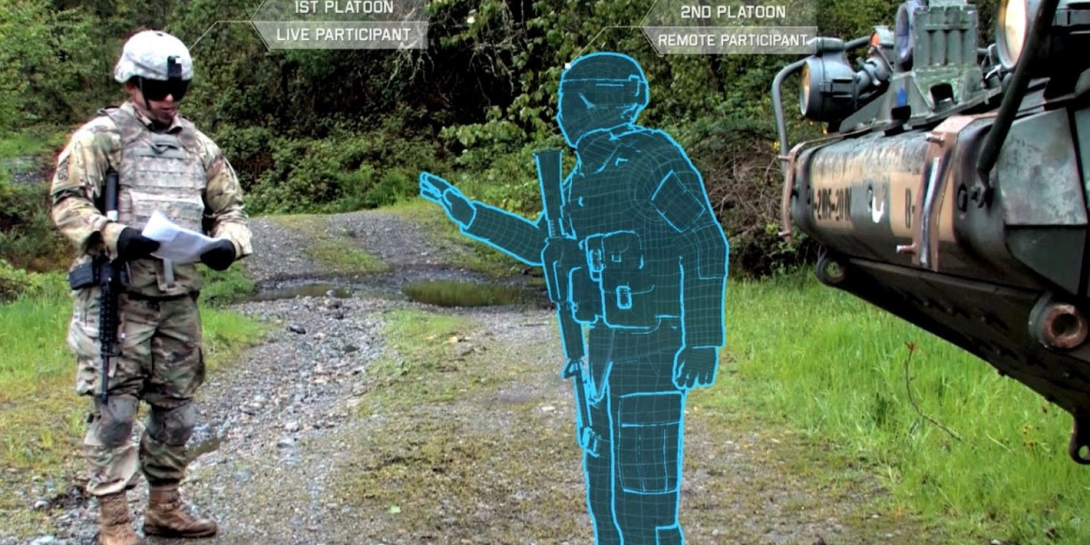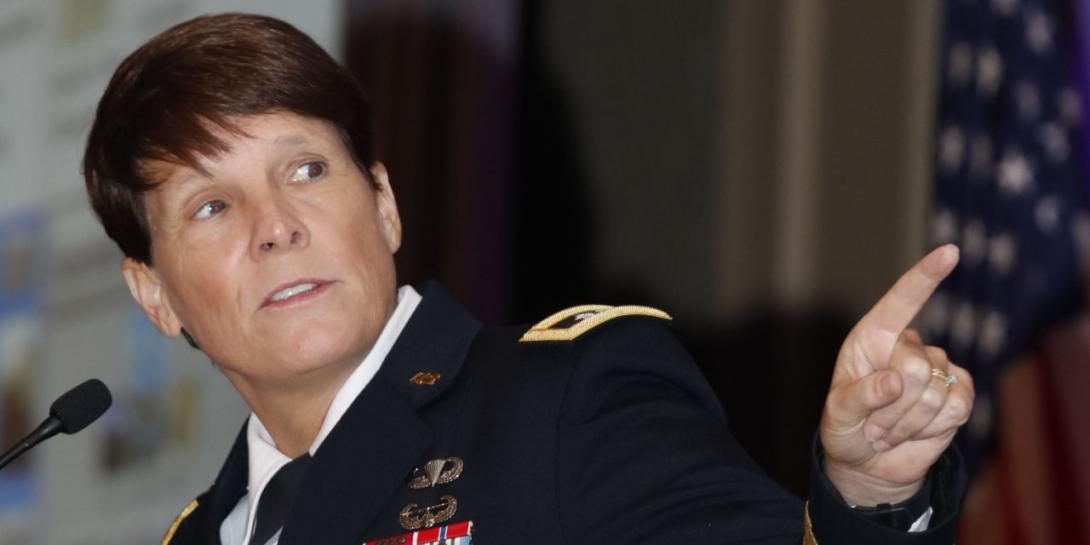Synthetic Training Environment Piques Partner Interest
International partners and allies are showing interest in the U.S. Army’s Synthetic Training Environment, or STE, which will combine an array of technologies such as gaming, cloud computing, artificial intelligence and virtual and augmented reality to converge live, virtual and constructive training.
“Our allies are watching us very closely on the Synthetic Training Environment. We all have the same challenges. We all say we need common data, common standards, open architecture and common terrain,” revealed Maj. Gen. Maria Gervais, USA, STE cross-functional team director, Army Futures Command, during the AFCEA TechNet Augusta conference. “I’ve been over to the United Kingdom and spoken at a conference there. Many, many of our partners were there,” she said. “In fact, I have a visit from my U.K. counterpart the 11th of September.”
Partners in the Indo-Pacific, and even Iraq, also have shown interest, she added.
The STE will provide multi-echelon training and a mission rehearsal capability for the operational, institutional and self-development training. Soldiers will be able to use it for acquiring, maintaining and honing a variety of skills, including skills required for individual career fields, such as vehicle maintenance or cybersecurity. It is expected to allow soldiers to gain proficiency much faster than traditional training. In fact, Gen. Gervais refers to the system as a second revolution in training.
“We are talking to our partners because we have to fix this. It impacts us on the ground when we’re training, when we’re doing mission rehearsals and it impacts us at the point of execution. It’s all that wasted time. You can train one way, but if you can’t make it work on the ground, it’s just lost time,” she declared.
The STE is expected to be fully operational and available by 2023, and soldiers in the signal, cyber and electronic warfare domains might use it to maintain skill level proficiency. Signal soldiers troubleshooting tactical communications systems, for example, traditionally use manuals with step-by-step flow charts to assist in finding a defective component. “Now, you can put on a set of virtual reality googles that shows the sequence that needs to happen. You can have an intelligent tutor. You can figure out how to bring an entire system online just through repetition,” Gen. Gervais explained.
Additionally, a cyber warrior could train in a virtual city, with complete infrastructure—buildings, subways, sewers, electrical power. “And then cyber could be applied to take out something. You can shut off power and see what happens,” Gen. Gervais offered. “You can virtualize a cyber environment. You can virtualize electronic warfare effects in that environment.”
The system’s One World Terrain software, a virtual representation of the planet’s surface, also can be used to train artificial intelligence programs. “The Next-Generation Combat Vehicle is using our One World Terrain product to train their algorithms for their autonomous vehicle in our synthetic environment before they ever do it live,” she said. Officials from the program office know where they’re going to test the vehicle, so they can test it test it virtually before doing so on real-world terrain, she added.
The Army-funded Institute for Creative Technologies provides some of the virtual training capabilities. The institute has won awards for its hologram technology, and Gen. Gervais says holograms are a possibility for the STE in the future. “Is it in the realm of the possible? Yes,” she said.
The system uses virtual reality avatars to represent living individuals. Gen. Gervais has interacted with soldiers using an avatar of herself. “They have been able to take me and do a capture of me and actually put me in a squad that had googles on,” she said.
She also suggested scenarios in which the system could be used during combat. “Everybody’s got the goggles on. They’re seeing the same terrain, and they’re talking about it in a distributed fashion, and you have a division commander or a squad leader right there in the position with you.”
The Army recently conducted user assessments of its One World Terrain technology to train virtually in 3D on battlefields around the world from home station or deployed locations.
Soldiers from the 1st Infantry Division out of Fort Riley, Kansas, helped assess the 3D terrain database, which will be used on the Army's training simulation platforms. They also tested a new training management tool and training simulation software that will tie the different simulation platforms together to portray an evolving scenario for all users involved in mission rehearsals, according to an Army announcement.






Comments